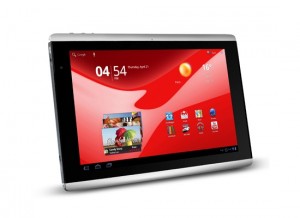
The differences are still sufficient to warrant a second look at the Liberty Tab Bell G100. For example, the Liberty Tab, thankfully, is not preloaded with the hub apps Acer is infamous for. Rather, the home screen is uncluttered, but still has easy access to the apps the Iconia has. You can still find the many eBook readers, office document viewer, video player, Internet music player, and quite a few games.
The Liberty Tab comes with Android 3.0, but is easily upgradable to 3.2 . In fact, the upgrade should take place automagically through thin air.
Android gadgets are notorious for a slight lag, but the Liberty was plagued with a longer lag than usual. Even with a task-killer app verifying that no other app was snatching the memory, the keyboard was not very responsive. The most likely reason for this lag is the build for the Android version, but that is unclear until the 3.2 tablet comes out. A simple test will reveal whether this is the case or not.
The screen is another case. While it is well lit and even across, the surface catches every reflection off its glossy face. The viewing angles are fantastic and the colors quite lively. Yet, the sensitivity is far to touchy. Try dragging and the device thinks you tapped instead. That might be solved through the configuration interface. The resolution, though, is more than adequate for surfing the Net and watching videos.
Just as with the Acer, the Packard Bell has a USB port, microSDHC slot, and a mini-HDMI port. A nice button locks the orientation of the screen in place – useful for reading lying on your bed.
The prices of the Iconia Tab and the Liberty Tab are identical. However, they do not both come with the same level of options. The Liberty Tab comes in 16G and 32G Wi-Fi versions. Iconia Tab has a 32G+3G version as well. The 16G Wi-Fi Liberty Tab is merely £350, which makes it among the cheapest Android 3.0 tablets.
Source: Product Page